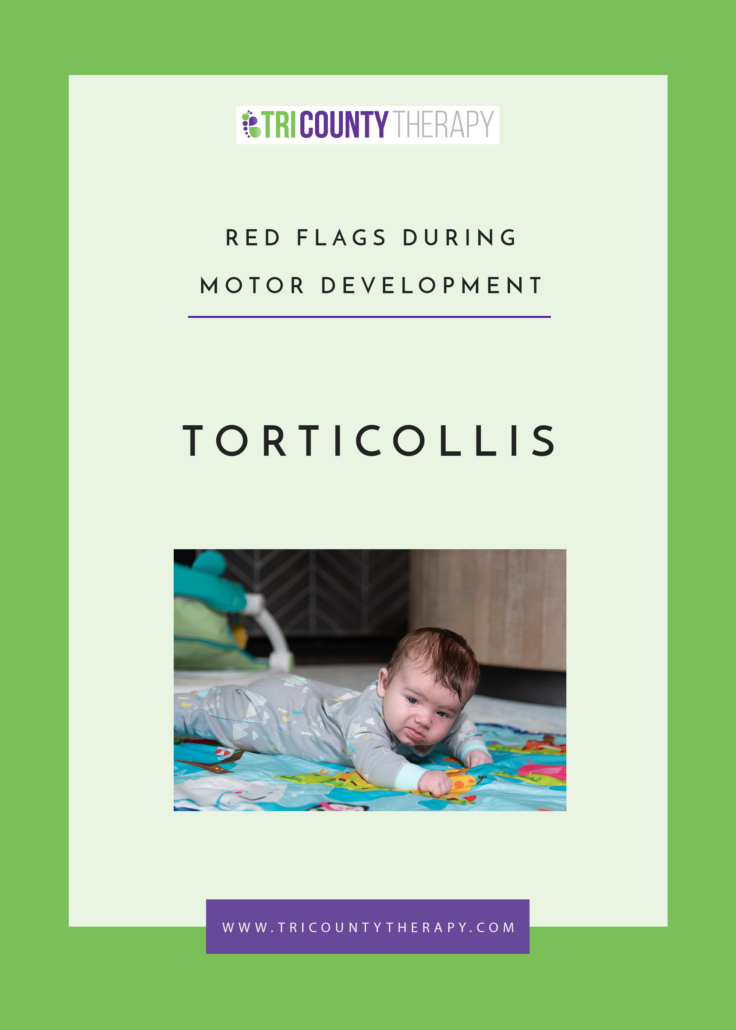Red Flags During Motor Development: Torticollis

Torticollis is typically seen in infants through toddlers. Babies and toddlers with torticollis will present with a preference for looking to one side, either left or right, usually accompanied by a head tilt. Torticollis can lead to atypical head shape, preference for movement to only one side, visual impairments, and general gross motor delay. It is important to discuss any of these findings with your child’s pediatrician as early as possible. Physical therapy can help address neck range of motion, increased strength, improved positioning for head shape, and gross motor skills to promote overall gross motor development.
Tip #1
Be sure to encourage tummy time! Promote tummy time as much as possible with your baby, with a goal of up to one hour per day or more spent on the tummy. Tummy time promotes strengthening through the neck, core, back, and arms!

Tip #2
Change the position in which your child plays and rests in throughout the day. Encourage side-lying, tummy time, supported sitting, and a variety of positions to avoid laying the child on her back and experiencing increased pressure on the back of the skull. Use mirrors or fun toys that light up or play music to encourage entertainment and distraction!

Tip #3
Encourage your child to look to both sides equally! Present yourself and toys on both left and right sides, as well as feeding the child on both sides. Change your child’s position in the crib by switching where her head and feet are each day to encourage outward looking on both sides. This helps to encourage improved movement to left and right!


Thank you for reading, Red Flags During Motor Development: Torticollis.
Written by: Kimberly Shanahan
Lead Physical Therapist
Tri-County Therapy

